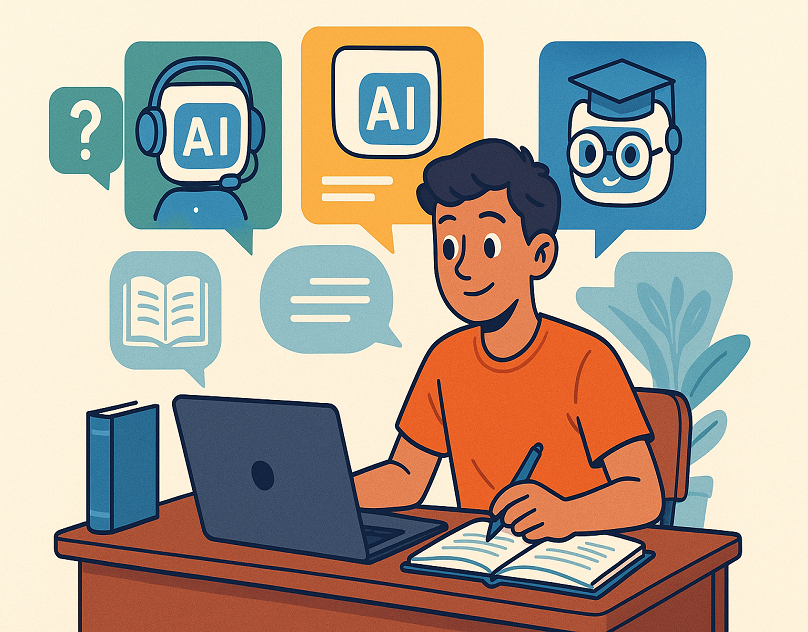
In a digital world where milliseconds matter, businesses and systems can no longer afford decision latency. Enter AI agents — autonomous software entities that perceive, reason, and act in dynamic environments with minimal human intervention. These intelligent systems are redefining what it means to make decisions in real time, powering use cases from supply chain optimization to customer support, fraud detection, and beyond.
What Are AI Agents?
AI agents are computational programs capable of observing their environment, analyzing data, learning from patterns, and taking action to achieve a specific goal. Their strength lies in autonomy — they don’t just execute pre-coded instructions but adapt and respond intelligently to changing circumstances.
At their core, AI agents combine three components:
- Perception Layer: Gathers input from sensors, APIs, or data streams.
- Reasoning Engine: Processes information using algorithms like reinforcement learning, neural networks, or symbolic reasoning.
- Action Module: Executes decisions — this could mean placing an order, generating an alert, or updating a process.
Think of AI agents as self-governing digital workers that continuously learn and improve, enabling seamless automation of cognitive tasks once reserved for humans.
Why Real-Time Decision-Making Matters
Real-time decision-making means processing incoming data and responding instantly — often within seconds or even microseconds. The value lies in immediacy. In financial trading, a delay of even a few milliseconds can cause significant losses. In healthcare, prompt decision support can be the difference between life and death. AI agents bring speed, precision, and adaptability to these mission-critical processes.
Traditional automation systems rely on rule-based scripts that break when conditions deviate from expectations. AI agents, however, can handle uncertainty, learn from new scenarios, and make probabilistic judgments that evolve over time. This fusion of speed and intelligence transforms reactive processes into predictive, self-optimizing workflows.
How AI Agents Enable Autonomous Decisions
AI agents integrate advanced technologies to transform raw data into action. Their decision-making pipeline often includes the following flows:
- Data Collection and Context Awareness:
Agents continuously monitor multiple inputs such as IoT sensors, web events, or system logs to gain situational awareness. - Inference and Prediction:
Leveraging trained AI models, they predict potential outcomes based on historical data and real-time context. - Policy Optimization:
Using reinforcement or deep learning techniques, agents evaluate possible actions and select those with the highest expected reward or efficiency. - Execution with Feedback Loop:
Once an action is taken, feedback is analyzed to refine future strategies — a loop that ensures continuous improvement.
This cycle creates what is often termed as “closed-loop decision-making” — where agents not only act but also self-correct based on outcomes.
Real-World Applications Across Industries
- Financial Services:
Trading bots and risk management systems powered by AI agents execute transactions, detect anomalies, and adjust portfolios based on real-time market fluctuations. - Supply Chain and Logistics:
AI agents automate inventory tracking, route optimization, and supplier selection, minimizing operational delays and reducing costs even under shifting demand patterns. - Customer Experience and Support:
Conversational AI agents provide instant, context-aware responses, resolving issues or routing complex queries to human agents only when necessary. - Healthcare:
Diagnostics, patient monitoring, and treatment recommendations increasingly leverage AI-driven assistants that analyze symptoms or imaging data to support medical professionals in real-time decision-making. - Manufacturing and Industry 4.0:
AI agents analyze equipment data to predict faults, schedule maintenance, and adjust production lines for maximum uptime. - Cybersecurity:
Autonomous defense agents detect threats, isolate vulnerabilities, and trigger countermeasures instantly — mitigating breaches before they escalate.
These examples illustrate how intelligent agents are rapidly shifting the balance from human-dependent decisions to machine-augmented autonomy.
The Technology Behind Real-Time Agents
Several breakthroughs have enabled the rise of AI agents capable of autonomous reasoning:
- Reinforcement Learning (RL):
Allows agents to learn through trial and error, optimizing strategies over time based on rewards and penalties. - Large Language Models (LLMs):
Extend reasoning and comprehension capabilities, enabling natural language understanding, complex query resolution, and multi-step planning. - Edge AI:
Brings computation closer to data sources, enabling real-time decisions in latency-sensitive environments like autonomous vehicles and robotics. - Multi-Agent Systems (MAS):
Networks of cooperative agents that coordinate in parallel, allowing distributed decision-making across large-scale systems.
Combined, these technologies allow modern AI agents to perform continuously, scale effectively, and adapt to diverse domains without explicit reprogramming.
Benefits of Autonomous Decision-Making
The payoff from deploying AI agents in real-time operations is both strategic and operational:
- Speed and Efficiency: Actions are computed and executed instantaneously.
- Consistency: Removes human bias and fatigue, ensuring stable performance.
- Scalability: Agents can monitor thousands of parameters simultaneously.
- Predictive Intelligence: Agents not only react but also anticipate outcomes.
- Cost Optimization: Reduces the need for 24/7 human oversight and manual interventions.
When implemented effectively, AI agents allow enterprises to shift human attention to higher-value activities like strategy, creativity, and innovation.
Addressing the Challenges
While powerful, AI agents also present challenges that require careful oversight:
- Ethical Decision Boundaries: Machines must respect ethical and regulatory frameworks in sensitive domains.
- Explainability: As agents use deep learning, their reasoning can sometimes appear opaque, emphasizing the need for interpretable AI.
- Data Quality: Garbage-in, garbage-out dynamics make high-quality, contextual data essential for credible outputs.
- Security: Autonomous systems must safeguard against manipulation and adversarial attacks.
Balancing autonomy with accountability is critical for widespread trust and adoption.
The Future of Real-Time AI Autonomy
As technology matures, AI agents are expected to evolve from specialized tools to universal digital collaborators. They will work alongside humans in hybrid teams — managing information, simulating outcomes, and making rapid yet transparent decisions. Emerging ecosystems like digital twins, autonomous workflows, and decentralized intelligence will be fueled by such agents capable of orchestrating entire systems with minimum latency.
In essence, AI agents are not just decision-support systems — they are decision-makers. Their capacity to think, act, and learn in real time represents a fundamental shift in how organizations and machines operate. The era of instant, autonomous intelligence has only just begun, and its ripple effects will define the next stage of the digital revolution.


